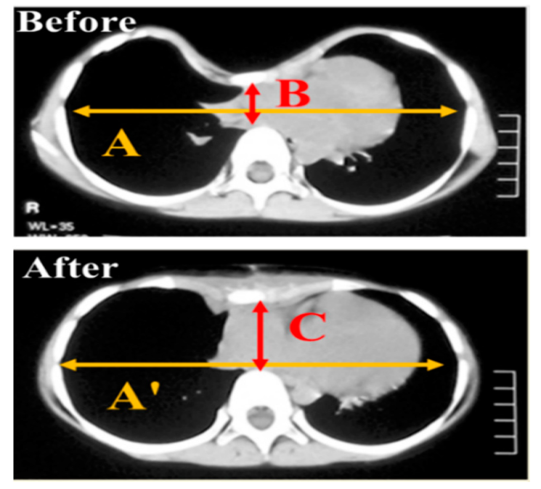Surgical Repair of Congenital Chest Wall Deformity (Pectus Excavatum): A 20-Year Multicenter Experience
DOI:
https://doi.org/10.69667/rmj.25103Keywords:
Pectus Excavatum, Chest Wall Deformities, Ravitch Procedure.Abstract
Pectus excavatum (PE), the most common congenital chest wall deformity, often worsens during adolescence and can lead to significant cardiopulmonary dysfunction in severe cases. This prospective, multicenter study evaluated the long-term outcomes of the modified Ravitch procedure over 20 years (2003–2023) at three tertiary care hospitals. A total of 100 patients with a Haller Index >3.2, symptomatic PE, or failed non-surgical management underwent the procedure, which included resection of deformed costal cartilages, sternal osteotomy, and selective bar insertion for additional support. Patient demographics, clinical symptoms, surgical outcomes, and complications were analyzed. The cohort consisted predominantly of males (79%), with an average age of 15.9 years. Symptoms included dyspnea (59%), chest tightness (11%), palpitations (4%), and chest pain (6%), while 26% were asymptomatic. Postoperative hospitalization averaged two days, with no significant differences in hospital stay or complication rates between bar-inserted (30 cases) and non-bar-inserted (70 cases) patients. Complications were minimal, including wound fluid accumulation (7%), infection (6%), pneumothorax (3%), and bar displacement (6.6% of bar-inserted cases). All patients demonstrated improvement in the Haller Index, and satisfaction rates were high, with no mortality reported. The study reaffirms the Ravitch procedure as a safe, effective, and durable solution for PE correction, offering both functional and cosmetic benefits. Its adaptability, low complication rates, and positive impact on quality of life make it a reliable option for patients with severe PE. Long-term follow-up supports its role as a gold standard in surgical management, with outcomes remaining stable over decades.

Downloads
Published
Issue
Section
How to Cite
Similar Articles
- Khaled Smeo, Evaluation of Wound Healing and Pain Perception After Frenectomy Using 810 Nm Diode Laser in A Young Patient: A Case Report , Razi Medical Journal: Volume 1, Issue 4, 2025 (October to December)
- Fatima Elhag Ahmed, Susan Zroog, Abdelhakam Ali, Nurses' Knowledge regarding Immediate Care of Newborns in the Saudi Hospital for Obstetrics and Gynecology, Sudan , Razi Medical Journal: Volume 1, Issue 3, 2025
- Esam Alsaghair, Taher Alkesa, Wesam Elsaghayer, Validity of Selective Management in Trans pelvic Gunshot Wounds , Razi Medical Journal: Volume 1, Issue 2, 2025
- Faisal Ali Matoug, Taher Alkesa, Esam Alsaghair, Fathi Elzowawi, Wesam Elsaghayer, Acute Intestinal Obstruction: A Retrospective Study at Misurata Medical Center , Razi Medical Journal: Volume 1, Issue 4, 2025 (October to December)
You may also start an advanced similarity search for this article.








